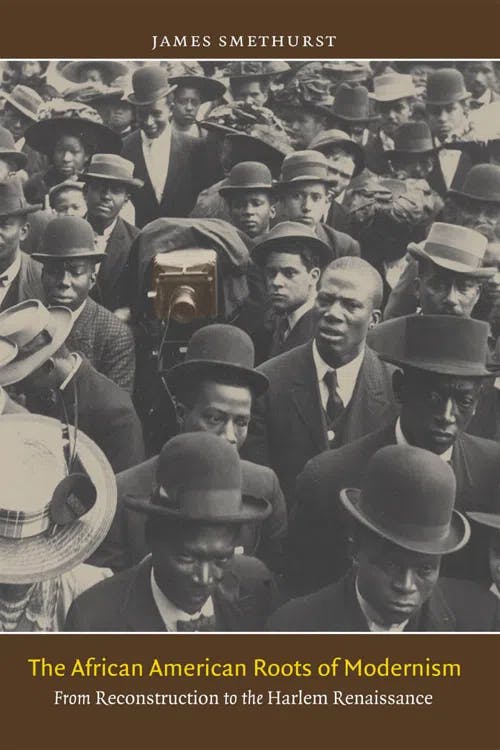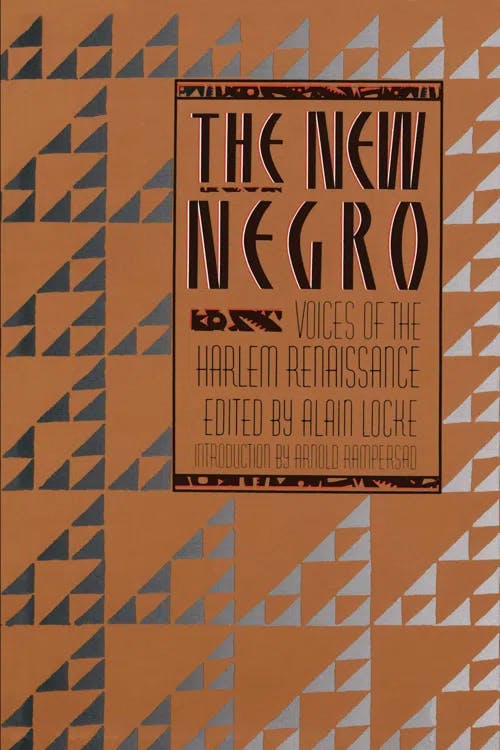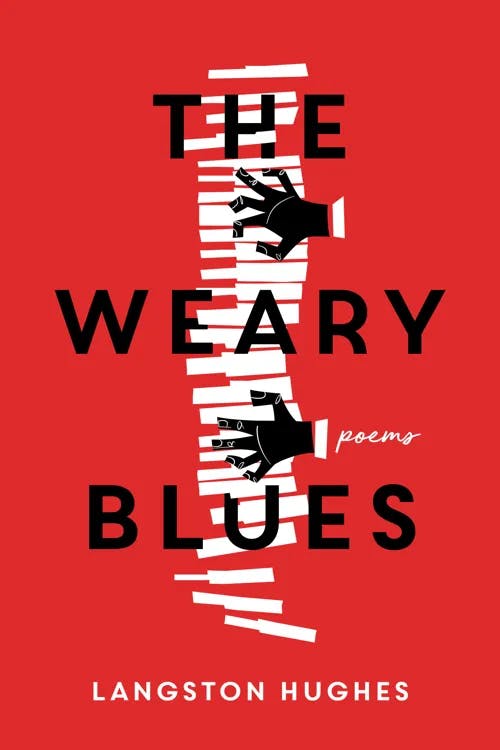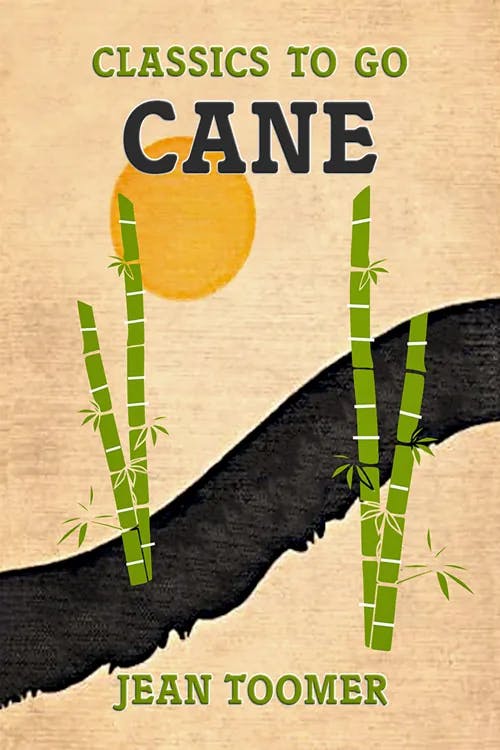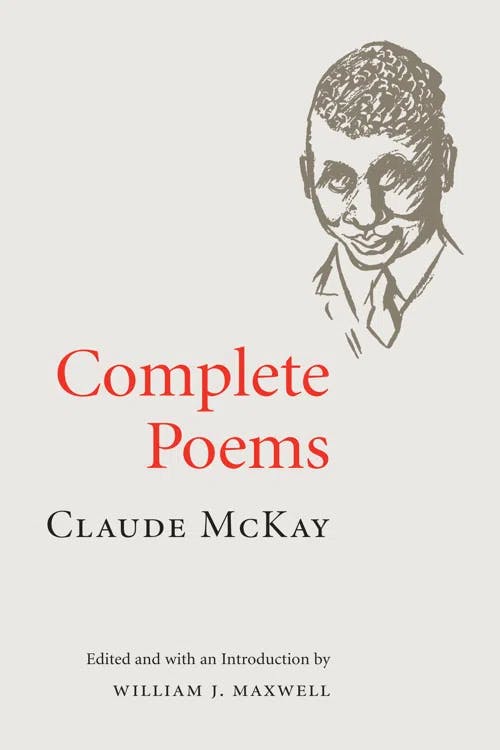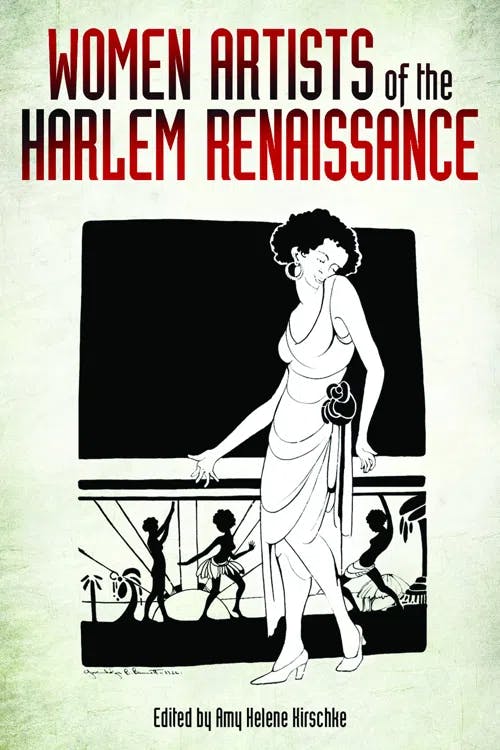What is the Harlem Renaissance?
PhD, Media Arts and English Literature (Royal Holloway, University of London)
Date Published: 19.09.2023,
Last Updated: 09.01.2024
Share this article
Defining the Harlem Renaissance
The Harlem Renaissance was an artistic, political and cultural clustering of activities and network of artists in the African American diasporic community. It was centered around the Upper Manhattan neighborhood of Harlem, bursting with catalytic experimentation and energy in the 1920s and 1930s. This experimentation saw poetry, fiction, drama, dance, music, fashion, sculpture, photography and visual art all collide and circulate in salons, house-rent parties, dinners, and nightclubs.
These ideas were shared in books, such as Nella Larsen’s Quicksand (1928 [2012]) and Claude McKay’s Home to Harlem (1928 [2022]); and in magazines like The Messenger, The Crisis: A Record of the Darker Races, Opportunity: A Journal of Negro Life and Fire!!; as well as anthologies like James Weldon Johnson’s The Book of American Negro Poetry (1922 [2021]) and Alain Locke’s The New Negro (1925 [2014]). The optimism and energy of Harlem was captured by photographers, such as James Van Der Zee, who would hand-tint his prints and portraits; and in songs like Bessie Smith’s “St. Louis Blues” and Duke Ellington’s “Take the ‘A’ Train.” Paintings like those by Aaron Douglas, sculptures by Augusta Savage, and the woodcut prints of James Lesesne Wells all contributed to the Harlem Renaissance. Its atmosphere was also documented in stories that proliferate from the time, such as when the pilot Hubert Fauntleroy Julian (nicknamed the “Black Eagle of Harlem” by the papers) parachuted into New York in 1923, playing “Runnin’ Wild” on a gold-plated saxophone as he flew over the streets of Harlem (Grandt, Gettin’ Around, 2018).
The “New Negro movement”
This period of intense artistic activism was borne out of the New Negro movement. Indeed, the term “Harlem Renaissance” has been retrospectively assigned to this era, while it was known at the time as the “New Negro movement” (Sherrard-Johnson, A Companion to the Harlem Renaissance, 2015) or the “New Negro Renaissance” (Wall, The Harlem Renaissance, 2016). Henry Louis Gates and Gene Andrew Jarrett explore how the New Negro movement “emerged to contest degrading black stereotypes” (The New Negro, 2021) and racist caricatures in order to redefine cultural identity. This was — as Stanley Crouch writes — an “Age of Redefinition” (Notes of a Hanging Judge, 1990), from old to new, as part of the struggle for civil rights. The Harlem Renaissance, Cary D. Wintz writes:
touched almost every aspect of African American culture and intellectual life in the period from World War I to the Great Depression. Its impact redefined black music, theatre, and the visual arts; it reflected a new more militant political/racial consciousness and racial pride that was associated with the term “New Negro” [...]. (2020)
Edited by Cary D. Wintz
touched almost every aspect of African American culture and intellectual life in the period from World War I to the Great Depression. Its impact redefined black music, theatre, and the visual arts; it reflected a new more militant political/racial consciousness and racial pride that was associated with the term “New Negro” [...]. (2020)
This was enlivened by the founding of the National Association for the Advancement of Colored People (NAACP) in 1909; the Universal Negro Improvement Association (UNIA), founded in Jamacia in 1914 by Marcus Garvey (who moved to Harlem in 1916); and the ideas of W. E. B. Du Bois that were set out in now seminal works like The Souls of Black Folk (1903 [2019]). In Harlem and other Black districts of northern cities in America, many turned to the arts as part of the fight for equality. David Levering Lewis writes of Charles S. Johnson, the sociologist and founder of the National Urban League’s magazine Opportunity:
If the road to the ballot box and jobs was blocked, Johnson saw that the door to Carnegie Hall and New York publishers was ajar. Each book, play, poem, or canvas by an Afro-American would become a weapon against the old racial stereotypes [...]. (When Harlem was in Vogue, 1981)
This was, then, a self-conscious movement where, as Langston Hughes would later reflect: “the Negro was in vogue” (The Big Sea, 1940 [2015]). Indeed, the “Jazz Age” came to broadly define this decade: a name that was borne out of the blues and jazz music of the Harlem Renaissance. As James Smethurst argues in The African American Roots of Modernism, the Harlem Renaissance is an integral part of the
cultural strands that produced literary modernism and the line of bohemias or artistic countercultures in the United States stretching back to the turn of the twentieth century. (2011)
James Smethurst
cultural strands that produced literary modernism and the line of bohemias or artistic countercultures in the United States stretching back to the turn of the twentieth century. (2011)
The profound influence of the Harlem Renaissance can thus be seen in not only subsequent artistic movements, but in much of modernism’s formal play with rupture and radical experimentation. As Zoë Henry writes: “Put another way: Modernism still has the Blues” (“Syncopating Commemoration: On the Legacy of Langston Hughes”, 2022).
Why Harlem?
In his autobiography, The Big Sea (1940), Hughes writes that he had “an overwhelming desire to see Harlem. More than Paris, or the Shakespeare country, or Berlin, or the Alps, I wanted to see Harlem, the greatest Negro city in the world.” Emily Bernard notes that “Hughes was not alone” with this view, and that a popular saying from the time was: “I’d rather be a lamppost in Harlem than Governor of Georgia” (The Cambridge Companion to the Harlem Renaissance, 2007). So, why Harlem?
Carla L. Peterson takes up this very question in A Companion to the Harlem Renaissance (2015), tracking Harlem’s bohemian history and looking at the growth of New York’s Black population from the colonial period through to 1910, when over 91,000 Black people lived in the metropolitan area. “In Harlem,” Linda Wagner-Martin writes, “the Negro was no longer the minority” (The Routledge Introduction to American Modernism, 2016). As Peterson, Wagner-Martin, and many others have explored, one of the central causes for this was the Great Migration. Peterson highlights that of the 60,500-strong Black population of Manhattan in 1910, only 14,300 were born in New York State (2015). The Great Migration saw the mass movement of more than six million Black people from the rural South to urban areas in the North, like Philadelphia, Chicago, and New York. Many Black Americans moved to escape the racism, mob violence, and Jim Crow segregation of the South, as well as terrible working and living conditions, devastating floods in Alabama and Mississippi in 1915, and a boll weevil infestation which wrecked the cotton crop (Wall, 2016). Although all of these factors were important, Locke argues in The New Negro:
The wash and rush of this human tide on the beach line of the northern city centers is to be explained primarily in terms of a new vision of opportunity, of social and economic freedom, of a spirit to seize, even in the face of an extortionate and heavy toll, a chance for the improvement of conditions. With each successive wave of it, the movement of the Negro becomes more and more a mass movement toward the larger and the more democratic chance—in the Negro’s case a deliberate flight not only from countryside to city, but from medieval America to modern. (1925 [2014])
Alain Locke
The wash and rush of this human tide on the beach line of the northern city centers is to be explained primarily in terms of a new vision of opportunity, of social and economic freedom, of a spirit to seize, even in the face of an extortionate and heavy toll, a chance for the improvement of conditions. With each successive wave of it, the movement of the Negro becomes more and more a mass movement toward the larger and the more democratic chance—in the Negro’s case a deliberate flight not only from countryside to city, but from medieval America to modern. (1925 [2014])
Thus, with the offer of better wages, housing, public school education and demand for workers, many traveled North. Hughes’s poem “The South” encapsulates this turn from the “lazy, laughing South / With blood on its mouth” to:
The cold-faced North,
For she, they say,
Is a kinder mistress
And in her house my children
May escape the spell of the South.
(1926 [2022])
Langston Hughes
The cold-faced North,
For she, they say,
Is a kinder mistress
And in her house my children
May escape the spell of the South.
(1926 [2022])
Harlem became home not only to African Americans who had moved from the South, but also to those who hailed from the West Indies and Africa — such as Claude McKay who arrived from Jamaica, and Eric Walrond from Guyana. Bernard emphasizes the mingling that took place “across culture and class lines, both outdoors – along the elegant avenues and broad sidewalks that characterized Harlem – and indoors – inside cabarets, buffet flats, speakeasies and ballrooms that dominated nightlife in the city” (2007). Henry highlights how the proliferation of “conceptions of Blackness far beyond national boundaries” spurred the artistic experiments of the Harlem Renaissance (2022).
As a number of critics have noted, many who contributed to the Harlem Renaissance were not actually based in Harlem. For example, Carla Kaplan writes that despite Nora Neale Hurston’s significant association with the Renaissance, she “hardly lived, rarely wrote about, and eventually turned away from” Harlem (A Companion to the Harlem Renaissance, 2015). Recent scholarship has embraced what Sherrard-Johnson describes as the “suppleness” (2015) of the field-defining term, and examined the Renaissance in the context of a more diffuse, interconnected and extended network of creativity. Indeed, contributions from the Black Chicago Renaissance are also being explored by, for example, Darlene Clark Hine and John McCluskey Jr. in The Black Chicago Renaissance (2012), and Richard A. Courage and Christopher Robert Reed in Roots of the Black Chicago Renaissance (2020).
Origins and endings
The Harlem Renaissance has been seen as a response to modernity, and it has its roots in a number of historical events: the Great Migration (starting around 1910); the end of the First World War in 1918; and the Red Summer of 1919. However, the chronological limits of the Harlem Renaissance are blurry. Although there is a critical consensus that it took place in the 1920s and 1930s, different accounts propose varying start and end points.
Should its origins start in 1925, as Wagner-Martin suggests (2016)? This is the year of Locke’s landmark anthology The New Negro, which presented essays, poetry and prose by such figures as Hughes, Hurston, Countee Cullen and Du Bois. Or should it be earlier, with James Weldon Johnson’s The Book of American Negro Poetry in 1922? As well as being published earlier, Jonathan W. Gray argues that Johnson’s collection has “a more varied collection of black voices” (“Harlem Modernisms,” 2012). Or perhaps as Wall (2016) puts forward: if we are looking to early seminal texts, can the Harlem Renaissance’s origins be found in McKay’s anthemic sonnet “If We Must Die” (Complete Poems, 2004), which was written in response to the white supremecist violence that raged in what James Weldon Johnson termed the “Red Summer'' of 1919? Or how about Jean Toomer’s Cane, which was published in 1923? Looking back earlier still, Abraham Chapman argues that Du Bois’s 1899 poem “The Song of the Smoke” was a “poetic anticipation” of the Harlem Renaissance (“The Harlem Renaissance in Literary History,” 1967).
Hughes’s account locates the Renaissance’s origins at the start of the 1920s, and to two Broadway shows and the Charleston dance: “It began,” Hughes recounts, “with Shuffle Along, Running Wild, and the Charleston. [...] [C]ertainly it was the musical revue, Shuffle Along, that gave a scintillating send-off to the Negro vogue in Manhattan” (The Big Sea, 1940). Shuffle Along opened in 1921, and Runnin’ Wild in 1923.
Some see the Harlem Renaissance’s “official launch” (Wall, 2016) with the famous dinner that took place at the Civic Club on March 21, 1924. This event would come to be known as a “coming out party” for the young Black writers, artists, and intellectuals who shaped the Harlem Renaissance (McHenry, Forgotten Readers, 2002). The dinner was hosted by Charles S. Johnson, ostensibly to celebrate the publication of Jessie Fauset’s There Is Confusion (1924 [2021]), and attendees included Gwendolyn Bennett, Cullen, Hughes, Walrond, Walter White, Du Bois, James Weldon Johnson, Georgia Douglas Johnson, Locke, and others. Major publishers and journal editors were also present, and Locke was accordingly invited to edit a special issue of Survey Graphic some time later. It became, Wall writes, “the kernel of The New Negro (1925), the signal anthology of the Renaissance” (2016).
The ending of the Harlem Renaissance is similarly elusive. Nathan Irvin Huggins suggests the Harlem Riots of 1935 as an endpoint (Voices from the Harlem Renaissance, 1995). Hughes (1940) and many critics have identified the Wall Street Crash of 1929 and the subsequent Great Depression as a time when the optimism that had characterized the Harlem Renaissance was doused. However, as Wall argues, “if the onset of the Depression ended the vogue for Harlem, it did not signal the end of the Renaissance” (2016). Indeed, more books by Black writers were produced in the 1930s than in the roaring twenties. Sherrard-Johnson notes that the “Long Harlem Renaissance” (2015) is now increasingly recognized by critics. This temporal expansion has been informed by the diasporic and transnational turns in African American studies, which attends to the contexts and artistic production occurring in the 1890s all the way way through to 1940 — or even, as John Hope Franklin suggests, into the 1960s and beyond (From Slavery to Freedom, 1980).
Harlem Renaissance Works
Just as the Renaissance’s temporal markers are evasive, so is its ideological and aesthetic core. Instead of a cohesive or structured movement, Wintz presents it as a self-conscious and varied “community of writers, poets, critics, patrons, sponsors, and publishers” where it “may be best conceptualized as an attitude or a state of mind—a feeling shared by a number of black writers and intellectuals” (2020). Following Wintz’s assertion, here is a small, very limited snapshot of the Harlem Renaissance’s “state of mind” (2020).
Poetry
As jazz poetry came into being, through poems like Hughes’s “The Weary Blues” (1926) with its frustrated structure and meter, modernist poetic experimentation abounded. Incorporating jive language and syncopated rhythms into free verse, “The Weary Blues” “sounds out” jazz music through its syntax and style:
Droning a drowsy syncopated tune,
Rocking back and forth to a mellow croon,
I heard a Negro play.
Down on Lenox Avenue the other night
By the pale dull pallor of an old gas light
He did a lazy sway. . . .
He did a lazy sway. . . .
To the tune o’ those Weary Blues.
(1926 [2022])
Like Hughes’s jazz poetry, many writers experimented with new forms by exploring and reconstructing folk traditions, music, Black vernacular speech and lyrical forms. Toomer’s Cane (1923), for example, draws on folk songs to compose poems, drama, and vignettes, exploring desire, sexuality, and exposing (as George Hutchinson writes) the “brutal effects of white supremacy” (“Harlem Renaissance,”2023). Subverting traditional poetic structures, Toomer describes Cane as the “swan-song” of the Southern “folk-spirit” (The Wayward and the Seeking, 1982), in its exploration of the emotions, tensions and trauma of the Southern landscape:
Their voices rise … the pine trees are guitars,
Strumming, pine-needles fall like sheets of rain…
Their voices rise … the chorus of the cane
Is caroling a vesper to the stars…
(Toomer, Cane, 1923 [2002])
Jean Toomer
Their voices rise … the pine trees are guitars,
Strumming, pine-needles fall like sheets of rain…
Their voices rise … the chorus of the cane
Is caroling a vesper to the stars…
(Toomer, Cane, 1923 [2002])
Bennett, too, plays with poetic form: “Song” (1925) sees disparate states meeting together through the melding of prayer imagery, dialect, dance, and — as the title anticipates — song, to navigate memories of the past, where the speaker remarks “hymns keep company / With old forgotten banjo songs”:
That I sing the heart of a race
While sadness whispers
That I am the cry of a soul. . . .
(“Song”, in The New Negro, 1925 [2014])
Using a different approach to Toomer and Bennett, McKay used classical Anglophone formal structures. For example, McKay uses a traditional sonnet structure to craft a call to protest in “If We Must Die,” and iambic pentameter, as in “The Tropics in New York,” to explore his longing for his Jamaican homeland. The speaker sees “[b]ananas ripe and green, and ginger root” behind shop window glass, which prompts a nostalgic pang:
A wave of longing through my body swept,
And, hungry for the old, familiar ways,
I turned aside and bowed my head and wept.
(“The Tropics in New York,” 1920, in Complete Poems, 2004)
Claude McKay
A wave of longing through my body swept,
And, hungry for the old, familiar ways,
I turned aside and bowed my head and wept.
(“The Tropics in New York,” 1920, in Complete Poems, 2004)
Fiction
Hutchinson summarizes the fiction of the Harlem Renaissance as being “notable for its concentration on contemporary life and its cultural instability — in other words, for its modernity” (2023). Nella Larsen’s Passing (1929 [2021]), for example, is a murder mystery set in Harlem which weaves together further mysteries of desire, human identity, race, and class — all in an open-ended novel that twists and turns through the use of analepsis.
Whereas Larsen’s Passing navigates Harlem, Zora Neale Hurston sets her framed narrative, Their Eyes Were Watching God (1937 [2009]) in rural Florida, using free indirect discourse to explore themes of race, gender, spirituality, sex, and storytelling. Kaplan argues that the novel plays with folklore to analyze how folk traditions are performed, which challenges essentializing notions of race (The Cambridge Companion to the Harlem Renaissance, 2007). Reflecting on the tensions of modernism, and how to reconcile the old and new, Hurston herself argues: “What we really mean by originality is the modification of ideas [...] the exchange and re-exchange of ideas” (“Characteristics of Negro Expression”, 1934 [1970]).
Many Harlem Renaissance writers unraveled issues of race, class, gender, and sexuality in their fiction, and used various experimental avant-garde and traditional forms to do so: Rudolph Fisher’s The Conjure-Man Dies (1932) is a detective novel; Du Bois’s Dark Princess (1928) is a romance; McKay’s Banjo (1929) bears the subtitle “A Story Without Plot;” Black No More (1931) by George S. Schuyler is a satire on race relations; and Fauset’s There Is Confusion (1924) is a novel of manners.
Visual Art
Writing about the racist caricatures of Black life in art in the nineteenth-century, the oil painter Henry Ossawa Tanner reflected that those “who have represented Negro life have only seen the comic, the ludicrous side of it, and have lacked sympathy with and appreciation for the warm bug heart that dwells within such a rough existence” (Mosby, Henry Ossawa Tanner, 1991). Indeed, artists of the Harlem Renaissance sought new forms of representation in order to celebrate the multifaceted complexity of modernity: both to celebrate the warmth and joy of places like Harlem and to engage with the history of exploitation. Meta Vaux Warrick Fuller’s statue “Ethiopia Awakening” (1921) famously “symboliz[ed] a reawakening of African diasporic identity” (Ater, Women Artists of the Harlem Renaissance, 2014). Depicting a young Black woman dressed in a nemes headdress, with her lower body wrapped in bandages, it called on ancient Egyptian symbols to suggest an awakening or rebirth. Reflecting on the piece, Fuller wrote:
Here was a group (Negro) who had once made history and now after a long sleep was awaking, gradually unwinding the bandage of its mummied past and looking out on life again, expectant but unafraid and with at least a graceful gesture. (Fuller, quoted by Ater, 2014)
Edited by Amy Helene Kirschke
Here was a group (Negro) who had once made history and now after a long sleep was awaking, gradually unwinding the bandage of its mummied past and looking out on life again, expectant but unafraid and with at least a graceful gesture. (Fuller, quoted by Ater, 2014)
The varied visual arts of the Harlem Renaissance and the wider movement resonate with Fuller’s idea of an “awaking”: it can be seen with Savage’s sculptures; Van Der Zee’s portraits of Harlem’s social life; and Douglas’s art deco paintings like “Let My People Go” (1935–9).
Queer Harlem
The history of the Harlem Renaissance is also a history of sexuality and queerness. As Henry Louis Gates states: the movement was “surely as gay as it was Black” (Fear of a Queer Planet, 1993). Ma Rainey and Lucille Bogan sang about same-sex desires in their Blues songs; and Richard Bruce Nugent was, as Thomas H. Wirth writes, “the first African American to write from a self-declared homosexual perspective” (Gay Rebel of the Harlem Renaissance, 2002). Ellipses overwhelm Nugent’s short story, “Smoke, Lilies and Jade,” where the elusive and disruptive omissions sensually and stylistically craft covert queer encounters, as in this moment between Alex and Beauty:
Beauty was smiling in his sleep … half his face stained flush color by the sun … [...] his lips were so beautiful … quizzical … Alex wondered why he always thought of that passage from Wilde’s Salome … when he looked at Beauty’s lips … I would kiss your lips … he would like to kiss Beauty’s lips … Alex flushed warm … with shame … or was it shame [...] … what could it all mean … did dreams have meaning…
(“Smoke, Lilies and Jade,” 1926 [2002])
Richard Bruce Nugent, edited by Thomas H. Wirth
Beauty was smiling in his sleep … half his face stained flush color by the sun … [...] his lips were so beautiful … quizzical … Alex wondered why he always thought of that passage from Wilde’s Salome … when he looked at Beauty’s lips … I would kiss your lips … he would like to kiss Beauty’s lips … Alex flushed warm … with shame … or was it shame [...] … what could it all mean … did dreams have meaning…
(“Smoke, Lilies and Jade,” 1926 [2002])
Nugent’s ellipsis playfully performs the very question the passage poses: “what could it all mean”?
The ways that desire, gender, the body and sexuality operate in the works of Hughes, McKay, Cullen, Larsen, Wallace Thurman, and others have also been explored through generative queer readings.
The lost or hidden histories of many of Harlem’s voices — particularly queer voices and women’s voices — have been recovered by literary critics and historians. Whole books have been unearthed from the archives, like McKay’s Amiable with Big Teeth, which was published in 2017 after Jean-Christophe Cloutier found the manuscript in Columbia University’s archives. The Harlem Renaissance and its profound legacy — within modernism, the groundwork it laid for the civil rights movement and the Black Arts Movement of the 1960s and 1970s — continues to be mapped today, alongside all its tensions and complexities.
Further reading on Perlego
Cooper, W. (1996) Claude McKay, Rebel Sojourner in the Harlem Renaissance. LSU Press. Available at: https://www.perlego.com/book/967121/claude-mckay-rebel-sojourner-in-the-harlem-renaissance-a-biography-pdf
Davis, T. and Brock, B. (2021) Documents of the Harlem Renaissance. Bloomsbury Publishing. Available at: https://www.perlego.com/book/4183161/documents-of-the-harlem-renaissance-pdf
Soto, M. (2018) Measuring the Harlem Renaissance. University of Massachusetts Press. Available at: https://www.perlego.com/book/3288081/measuring-the-harlem-renaissance-the-us-census-african-american-identity-and-literary-form-pdf
Wintz, C. D. (2013) Remembering the Harlem Renaissance. Taylor and Francis. Available at: https://www.perlego.com/book/1622042/remembering-the-harlem-renaissance-pdf
External resources
Jenner, G. (2021) “The Harlem Renaissance”, You’re Dead to Me. Available at: https://www.bbc.co.uk/sounds/play/p09btgc2
Icons: Harlem Renaissance in Motion, Broadway Podcast Network. Available at: https://podcasts.apple.com/us/podcast/icons-harlem-renaissance-in-motion/id1607136029
Papa, V. (2021) “‘Clean, Original, Primitive’: Sexual Radicalism, Race Consciousness, and the Case of Harlem’s Queers”, Modernism/modernity. 6.2. Available at: https://doi.org/10.26597/mod.0203
What are the key elements of Harlem Renaissance art?
When was the core period for the Harlem Renaissance?
Who are some of the most famous figures associated with the Harlem Renaissance?
What are some examples of Harlem Renaissance novels?
What are some examples of Harlem Renaissance poetry?
What are some examples of Harlem Renaissance short stories?
What are some examples of songs made in the Harlem Renaissance?
Bibliography
Ater, R. (2014) “Meta Warrick Fuller’s Ethiopia and the America’s Making Exposition of 1921”, in Women Artists of the Harlem Renaissance. University Press of Mississippi. Available at: https://www.perlego.com/book/593326/women-artists-of-the-harlem-renaissance-pdf
Barton, M. and Jones, K. (2017) “The Harlem Renaissance: A Chronology”, Gather Out of Star-Dust: The Harlem Renaissance and The Beinecke Library. Available at: https://onlineexhibits.library.yale.edu/s/gatheroutofstardust/page/the-harlem-renaissance-a-chronology
Bennett, G. (1926) “Song”, All Poetry. Available at: https://allpoetry.com/poem/8583683-Song-by-Gwendolyn-Bennett
Bernard, E. (2007) “The Renaissance and the Vogue”, in The Cambridge Companion to the Harlem Renaissance. Cambridge University Press. Available at: https://doi.org/10.1017/CCOL052185699X
Chapman, A. (1967) “The Harlem Renaissance in Literary History,” in CLA Journal, vol. 11. Available at: https://www.jstor.org/stable/44328230
Courage, R. A. and Reed, C. R. (2020) Roots of the Black Chicago Renaissance. University of Illinois Press. Available at: https://www.perlego.com/book/2382572/roots-of-the-black-chicago-renaissance-new-negro-writers-artists-and-intellectuals-18931930-pdf
Crouch, S. (1990) Notes of a Hanging Judge. Oxford University Press.
Du Bois, W.E.B. (2019) The Souls of Black Folk. G&D Media. Available at: https://www.perlego.com/book/1250883/the-souls-of-black-folk-pdf
Fauset, J. R. (2021) There Is Confusion. Open Road Media. Available at: https://www.perlego.com/book/2825998/there-is-confusion-pdf
Franklin, J. H. (1980) From Slavery to Freedom: A History of Negro Americans. 5th ed. Alfred Knopf.
Gates, H. L. (1993) “The Black Man’s Burden”, in Fear of a Queer Planet, ed. by Michael Warner. University of Minnesota Press. Available at: https://www.upress.umn.edu/book-division/books/fear-of-a-queer-planet
Gates, H. L. and Jarrett, G. A. (2021) The New Negro. Princeton University Press. Available at: https://www.perlego.com/book/2377755/the-new-negro-readings-on-race-representation-and-african-american-culture-18921938-pdf
Grandt, J. (2018) Gettin’ Around: Jazz, Script, Transnationalism. University of Georgia Press. Available at: https://www.perlego.com/book/838962/gettin-around-jazz-script-transnationalism-pdf
Gray, J. W. (2012) “Harlem Modernisms”, in The Oxford Handbook of Modernisms. Oxford University Press. Available at: https://doi.org/10.1093/oxfordhb/9780199545445.013.0014
Henry, Z. (2022) “Syncopating Commemoration: On the Legacy of Langston Hughes”, Modernism/modernity, 7.2. Available at: https://doi.org/10.26597/mod.0244
Hine, D. C. and McCluskey, J. (2012) The Black Chicago Renaissance. University of Illinois Press. Available at: https://www.perlego.com/book/2382930/the-black-chicago-renaissance-pdf
Huggins, N. I. (1995) Voices from the Harlem Renaissance. Oxford University Press. Available at: https://global.oup.com/academic/product/voices-from-the-harlem-renaissance-9780195093605?cc=us&lang=en&
Hughes, L. (2015) The Big Sea. Macmillan Publishers.
Hughes, L. (2022) The Weary Blues. Open Road Media. Available at: https://www.perlego.com/book/3187412/the-weary-blues-pdf
Hughes, L. (1961) Ask Your Mama: 12 Moods for Jazz. Alfred. A. Knopf.
Hurston, Z. N. (1970) “Characteristics of Negro Expression”, in Negro: An Anthology, ed. by Nancy Cunard. Ungar. Available at: https://www.google.co.uk/books/edition/Negro_an_Anthology/26oQzwEACAAJ?hl=en
Hurston, Z. N. (2009) Their Eyes Were Watching God. HarperCollins. Available at: https://www.perlego.com/book/582431/their-eyes-were-watching-god-pdf
Hutchinson, G. (2023) “Harlem Renaissance”, in Encyclopedia Britannica. Available at: https://www.britannica.com/event/Harlem-Renaissance-American-literature-and-art
Johnson, J. W. (2021) The Book of American Negro Poetry. Mint Editions. Available at: https://www.perlego.com/book/2647990/the-book-of-american-negro-poetry-pdf
Jones, M. D. (2011) The Muse is Music: Jazz Poetry from the Harlem Renaissance to Spoken Word. University of Illinois Press. Available at: https://www.press.uillinois.edu/books/?id=p079269
Kaplan, C. (2015) “‘Betwixt and between’: Zora Neale Hurston In—and Out—of Harlem”, in A Companion to the Harlem Renaissance. Wiley. Available at: https://www.perlego.com/book/992284/a-companion-to-the-harlem-renaissance-pdf
Kaplan, C. (2007) “Zora Neale Hurston, folk performance and the “Margarine Negro”, in The Cambridge Companion to the Harlem Renaissance. Cambridge University Press. Available at: https://doi.org/10.1017/CCOL052185699X
Larsen, N. (2021) Passing. Chemeketa Press. Available at: https://www.perlego.com/book/2352114/passing-pdf
Larsen, N. (2012) Quicksand. Dover Publications. Available at: https://www.perlego.com/book/1443791/quicksand-pdf
Lewis, D. L. (1981) When Harlem was in Vogue. Penguin. Available at: https://www.penguinrandomhouse.com/books/330005/when-harlem-was-in-vogue-by-david-levering-lewis/
Locke, A. (2014) The New Negro. Touchstone. Available at: https://www.perlego.com/book/782008/the-new-negro-pdf
McHenry, E. (2002) Forgotten Readers: Recovering the Lost History fo African American Literary Societies. Duke University Press. Available at: https://www.perlego.com/book/1465747/forgotten-readers-recovering-the-lost-history-of-african-american-literary-societies-pdf
McKay, C. (2022) Home to Harlem. Penguin. Available at: https://www.penguin.co.uk/books/446510/home-to-harlem-by-mckay-claude/9781784877583
McKay, C. (2004) Complete Poems. University of Illinois Press. Available at: https://www.perlego.com/book/2588400/complete-poems-pdf
McKay, C. (2017) Amiable with Big Teeth. Random House. Available at: https://www.penguinrandomhouse.com/books/314335/amiable-with-big-teeth-by-claude-mckay/
Mosby, D. F. (1991) Henry Ossawa Tanner. Philadelphia Museum of Art.
Nugent, R. B. (2002) “Smoke, Lilies and Jade”, in Gay Rebel of the Harlem Renaissance. Duke University Press. Available at: https://www.perlego.com/book/1458434/gay-rebel-of-the-harlem-renaissance-selections-from-the-work-of-richard-bruce-nugent-pdf
Peterson, C. L. (2015) “What Renaissance?: A Deep Genealogy of Black Culture in Nineteenth-Century New York City”, in A Companion to the Harlem Renaissance. Wiley. Available at: https://www.perlego.com/book/992284/a-companion-to-the-harlem-renaissance-pdf
Riley, C. (2017) Free as Gods. University Press of New England. Available at: https://www.perlego.com/book/2236697/free-as-gods-how-the-jazz-age-reinvented-modernism-pdf
Sherrard-Johnson, C. (2015) “Introduction: Harlem as Shorthand: The Persistent Value of the Harlem Renaissance”, in A Companion to the Harlem Renaissance. Wiley. Available at: https://www.perlego.com/book/992284/a-companion-to-the-harlem-renaissance-pdf
Smethurst, J. (2011) The African American Roots of Modernism. The University of North Carolina Press. Available at: https://www.perlego.com/book/538782/the-african-american-roots-of-modernism-from-reconstruction-to-the-harlem-renaissance-pdf
Toomer, J. (2022) Cane. Otbebookpublishing. Available at: https://www.perlego.com/book/3556912/cane-pdf
Toomer, J. (1982) The Wayward and the Seeking: A Collection of Writings by Jean Toomer. Ed. by Darwin T. Turner. Howard University Press. Available at: https://academic.oup.com/melus/article-abstract/8/1/83/1429790
Wagner-Martin, L. (2016) The Routledge Introduction to American Modernism. Taylor and Francis. Available at: https://www.perlego.com/book/1559563/the-routledge-introduction-to-american-modernism-pdf
Wall, C. A. (2016) The Harlem Renaissance: A Very Short Introduction. Oxford University Press. Available at: https://academic.oup.com/book/921
Wintz, C. D. (2020) Black Writers Interpret the Harlem Renaissance. Taylor and Francis. Available at: https://www.perlego.com/book/2029426/black-writers-interpret-the-harlem-renaissance-pdf
Wirth, T. H. (2002) “Introduction”, in Gay Rebel of the Harlem Renaissance. Duke University Press. Available at: https://www.perlego.com/book/1458434/gay-rebel-of-the-harlem-renaissance-selections-from-the-work-of-richard-bruce-nugent-pdf
PhD, Media Arts and English Literature (Royal Holloway, University of London)
Polly Hember is a researcher, writer, and visiting tutor working on modernism and queer networks. She holds a PhD in Media Arts and English Literature from Royal Holloway, University of London, where her doctoral thesis attended to the neglected literary works of “the POOL group”. Her research interests include twentieth-century literature, queer theory, affect studies, technology, and visual cultures. She has published in Modernist Cultures and Hotel Modernisms (Routledge, 2023), and currently co-hosts the Modernist Conversations podcast.


